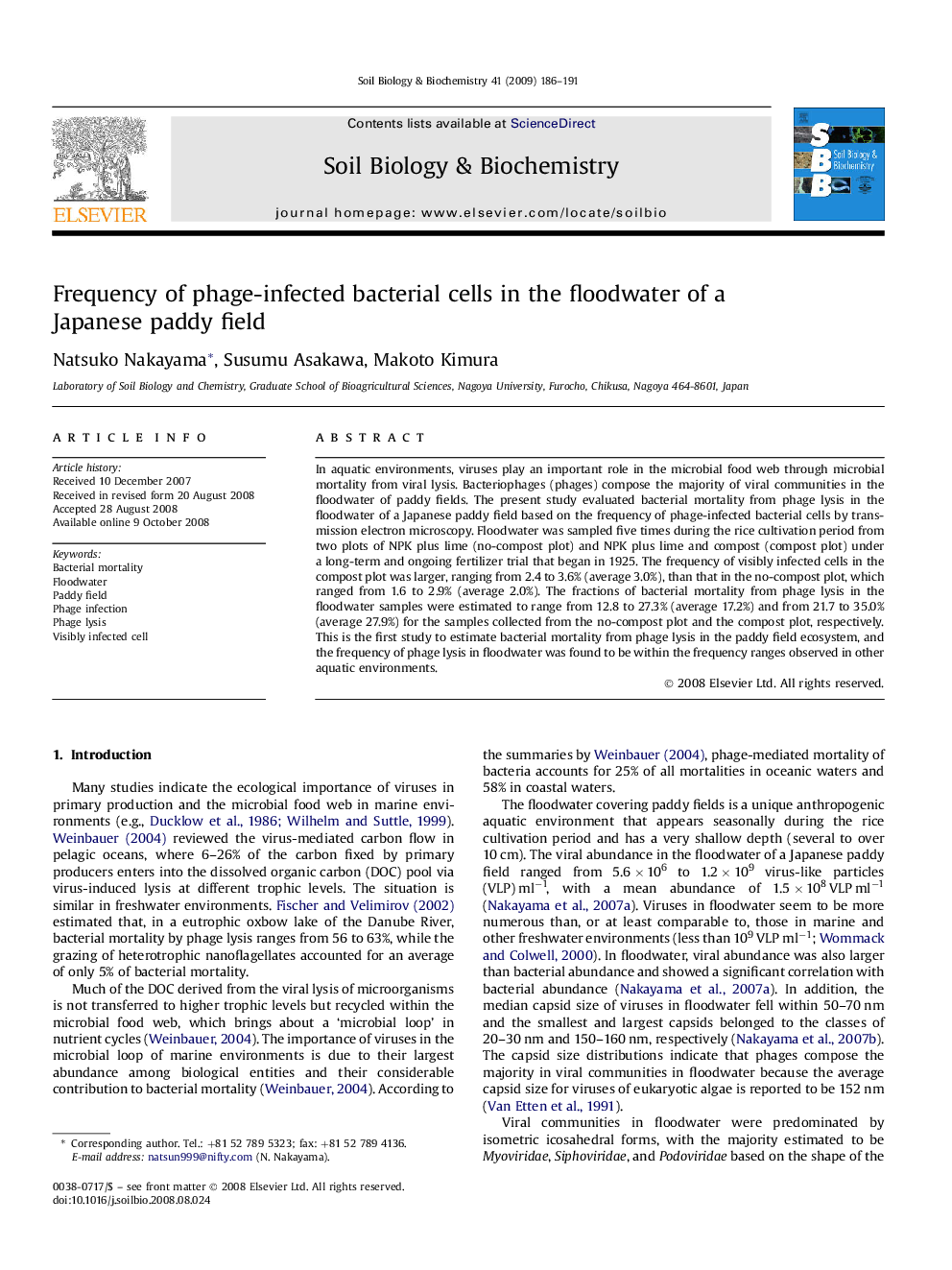| Article ID | Journal | Published Year | Pages | File Type |
|---|---|---|---|---|
| 2026114 | Soil Biology and Biochemistry | 2009 | 6 Pages |
In aquatic environments, viruses play an important role in the microbial food web through microbial mortality from viral lysis. Bacteriophages (phages) compose the majority of viral communities in the floodwater of paddy fields. The present study evaluated bacterial mortality from phage lysis in the floodwater of a Japanese paddy field based on the frequency of phage-infected bacterial cells by transmission electron microscopy. Floodwater was sampled five times during the rice cultivation period from two plots of NPK plus lime (no-compost plot) and NPK plus lime and compost (compost plot) under a long-term and ongoing fertilizer trial that began in 1925. The frequency of visibly infected cells in the compost plot was larger, ranging from 2.4 to 3.6% (average 3.0%), than that in the no-compost plot, which ranged from 1.6 to 2.9% (average 2.0%). The fractions of bacterial mortality from phage lysis in the floodwater samples were estimated to range from 12.8 to 27.3% (average 17.2%) and from 21.7 to 35.0% (average 27.9%) for the samples collected from the no-compost plot and the compost plot, respectively. This is the first study to estimate bacterial mortality from phage lysis in the paddy field ecosystem, and the frequency of phage lysis in floodwater was found to be within the frequency ranges observed in other aquatic environments.
